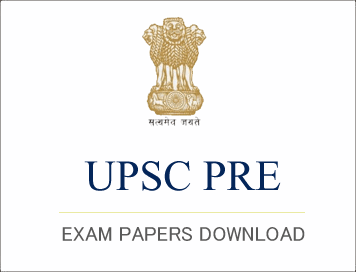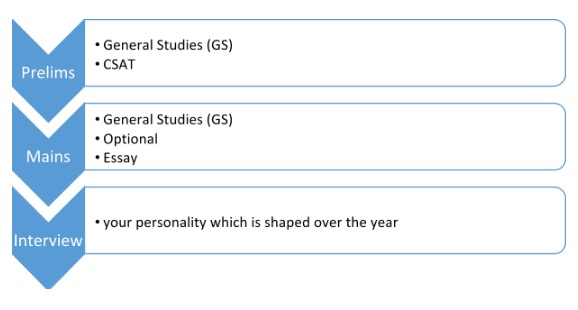Model Questions for UPSC PRE CSAT PAPER SET - 84
Passage
There is something people like about rappelling or abseilling. A form of
controlled descent used in mountaineering. It follows the more gruelling task of
climbing up. Of late, rappelling has found popularity as a staged activity.
Participants walk up a cliff rock face, while securely anchored to at least one
safety rope that is released in a controlled fashion from above. Some clubs keep
a third line free for instructors to come down and assist should anyone get
stuck mid-route. Most important, participants are allowed adequate pauses
enroute for that photograph of manhood’s dawning, , mama’s precious boy looking
great on vertical rock. As many adventure clubs would tell you, very few of
these muscle toting, fatigues-clad youngsters return to climbing. The photograph
endures; the mountain fades. Those who stick on do so because of a deeper
fascination, fully acknowledging their fragility and hardly resembling the
branded image of the adventurous. Further, as with the maturity curve in Indian
sports, deep purses do not always mean great talent; it is the progressive
tapping
of the pyramid’s bottom end that reveals a wider canvas of talent. The story is
little different with automobiles, where self-image precedes utility in vehicle
purchase. Utility vehicles (Uvs), sports utility vehicles (SUVs) and a few
crossovers make up the ‘adventure vehicles’ on Indian roads. In 2004–05. total
domestic UV sales had increased by 20.46 per cent to 176.339 units from 146.388
units. As at end August 2005, the trend for 2005–06 was a sales rise of 13.67
percent to 72.686 units for the category. Crossovers sell in very small volumes.
So the country’s adventure vehicle story is manly that of UVs. Of these, the
obviously brute types, that is, the big, expensive SUVs- lord the relatively
tame terrain of cities. Where else can the contrast be sharper? The key thing is
to be seen seem adventureous and look capable of crushing all else on the rods.
A well known fact is that beyond the odd automobile journalist who test-drives a
‘brute’ in testy terrain, most owners of off-road studs dare not stray from the
tramac, as the vehicles are expensive. In a cost-conscious market like India
with long periods of careful ownership, you could bunch a wide range of vehicles
from the cheapest Scorpio, costing around ` 7.3 lakhs (in Mumbai), to the
costliest Porsche Cayenne, selling at ` 92 lakhs, into this segment. Naturally
therein, the base of ownership and the tendency to punish the vehicle tapers
with higher price points. So if the brutes are largely doing tame duty or,
worse, showing off, where are the real adventure vehicles? To pick out that
segment, one needs to first outline the contours of Indian adventure. Like
everything else, it tends to be and needs to be low cost. Indian civilan
mountaineering expeditions, for example and there are several every year travel
without radio contact, global positioning system of satellite phone, and cut
down on porters and use borroed or hired equipment in short, rough it out
wherever possible. The limited budget is entirely skewed towards the final goal
with highest priority in expense for critical input segment equipment, clothing,
shelter and food), all else enjoying lower priority it is a bottom of the
pyramid consumer experience, one in which the final stages of transport are met
by ruged, low end UVs. In the hill and moditains it is the Bolero, Sumo, Trax
and their earlier brethren which remain trusted and are worked hare on rough
tracks every day. Mahindra and Mahindra (M and M). Tata Motors and Force Motors
(earlier Tata Tempo) make these vehicles. The companies are based in Maharashtra,
which has the highest number of adventure clubs in the country and a strong
presence of the autombile industry. While on a trek or rock climb in the
sahyadris, it is common to run into somebody from Tata Motors of Tata Power,
equally
strong being the likelihood of having a batch-mate from one of the Tata
companies if you are training at a mountaineering institute in the Himalayas.
Sadly, however, the economies of mass manufacturing shy away from responding to
niche segments and in India, adventure is a niche activity. The marker’s darling
therefore, remains the great Indian family or that faceless bunch of strangers,
jammed into a “people’s carrier”. No marks for guessing which is the adventure’s
longstanding favorite for personal transport. Although the price of petrol has
risen, the one vehicle that consistency captured the fancy of adventure
enthusiasts was the Maruti Gypsy, now reduced to largely institutional sales. It
has the perfect size to manoeuvre on mountain roads, is the best off- road
vehicle around, commands respect in remote areas, allows space for others on
roads and, in the true spirit of the adventurer, has a light weight presence. No
fanfare. It is the vehicle people will still give an arm and a leg to load up
and head for the crags. Interestingly, this size of the UV has been left
unattended by all domestic manufacturers, including Maruti, which has often
described the Gypsy’s small size and petrol engine as potential sales dampeners.
M and M has an engaging product in the larger Invader while Tata Motors and
Force Motors have kept out. But Maruti’s own view was partly based on the
Gypsy’s limited ability as a people mover. But the typical adventurer, the sort
hailing from the bottom of the pyramid, would have been happy with a
manoeuvrable, off-road model that was backed by the country’s largest vehicle
support network. Neither Maruti nor other manufactures found it attractive. For
the present, therefore, India’s adventure vehicles are gas guzzlers, sold with
little appreciation for he budget and requirement of Indian adventures.
1. According to the author which type of items take priority due to the
budget constraints for adventure trips?
(a) Porters
(b) Global Positioning System
(c) Specialized Equipment
(d) Satellite Phone
2. “It is the vehicle people will still give an arm and a leg to load up
and head for the crags.” Which one of the following is not a feature of the
vehicle referred to in the above sentence
(a) This vehicle can be maneuvered smoothly on hillyroads
(b) The sales of this vehicle are mostly institutional
(c) It is well accepted in remote areas
(d) It is the best vehicle for all terrains
3. Which of the following statements is incorrect as per the passage
(a) Abseilling has lately become popular as a staged activity
(b) India’s adventure vehicles are manufactured and sold constricting
requirement of Indian adventures
(c) Indian market is cost conscious with longer periods of careful ownership’s
(d) Force Motors is the successor of Bajaj Tempo
Passage
Unemployment is an important index of economics lack and lost output, but it
is much more than that. For the unemployed person it is often a damaging affront
to human dignity and sometimes a catastrophic blow to family life. Nor is this
cost distributed in proportion to ability to bear it. It falls most heavily on
the young, the semiskilled and unskilled, the black person, the older worker,
and the underemployed person in a low-income rural area who is denied the option
of securing more rewarding urban employment. The concentrated increase of
unemployment among specific groups in the population means far greater costs to
society than can be measured simply in hours of involuntary idleness or dollars
of income lost. The extra costs include disruption of the careers of young
people, increased juvenile delinquency, and perpetuation of conditions which
breed racial discrimination in employment and otherwise deny equality of
opportunity. There is another and more subtle cost. The social and economic
strains of prolonged under utilization create strong pressures for cost
increasing solutions. On the side of labour, prolonged high unemployment leads
to “share-the-work” pressures for shorter hours, intensifies resistance to
technological change and to rationalization of work rules, and in genera,
increases incentives for restrictive and inefficient measures to protect
existing jobs. On the side of business, the weakness of markets leads to
attempts to raise prices to cover high average overhead costs and to pressure
for protection against foreign and domestic competition. On the side of
agriculture, higher prices are necessary to active income objectives, when urban
and industrial demand for food and fibres is depressed and lack of opportunities
for jobs and higher incomes in industry keep people on the farm. In all these
cases, the problems are real and the claims understandable. But the solutions
suggested raise costs and promote inefficiency. By no means the least of
the advantages of full utilization will be a diminution of these pressures. They
will be weaker, and they can be more irmly resisted in good conscience,
when markets are generally strong and job opportunities are plentiful. The
demand for labour is derived from the demand for the goods and services which
labour participates in producing. Thus, unemployment will be reduced to 4 per
cent of the labour is derived from the demand for the myriad of goods and
services automobiles, clothing, food, electric generators, highways, and so on
is sufficiently great in total to required the productive efforts of 96 per cent
of the civilian labour force. Although many goods are initially produced as
materials or components to meet demands related to the further production of
other goods, all goods (and services) are ultimately destined to satisfy demands
that can, for convenience, be classified into four categories: consumer demand,
business demand for new plants and machinery and for additions to inventories,
net export demand of foreign buyers, and demand of government units, federal,
state, and local. Thus Gross National Product (GNP), our total output, is the
sum of four major components of expenditure: personal consumption expenditure,
gross private domestic investment, net exports, and government purchases of
goods and services. The primary line of attack on the problem of unemployment
must be through measures which will expand one or more of these components of
demand. Once a satisfactory level of employment has been achieved in growing
economy, economic stability requires the maintenance of continuing balance
between growing productive capacity and growing demand. Action to expand demand
is called for not only when demand actually, declines and recession appears but
even when the rate of growth of demand falls short of the rate of growth of
capacity.
4. In this passage, the word involuntary means
(a) Not free
(b) Without exercise of the will
(c) Done gratuitously
(d) Not desirable
5. According to the passage, a typical business reaction to a recession is
to press for
(a) Protection against imports
(b) Higher unemployment insurance
(c) Restrictive business practices
(d) Restraint on union activity






